A Visit to a Nearly Forgotten Colonnade Row in Williamsburg
In one of the oldest parts of Brooklyn are the remnants of a now mostly forgotten colonnade row — not the famous one in Brooklyn Heights but another one in what is now Williamsburg. In the 1830s, ’40s and ’50s, Greek Revival was the fashion, and all over the U.S. people were throwing up facsimiles of Greek temples,…
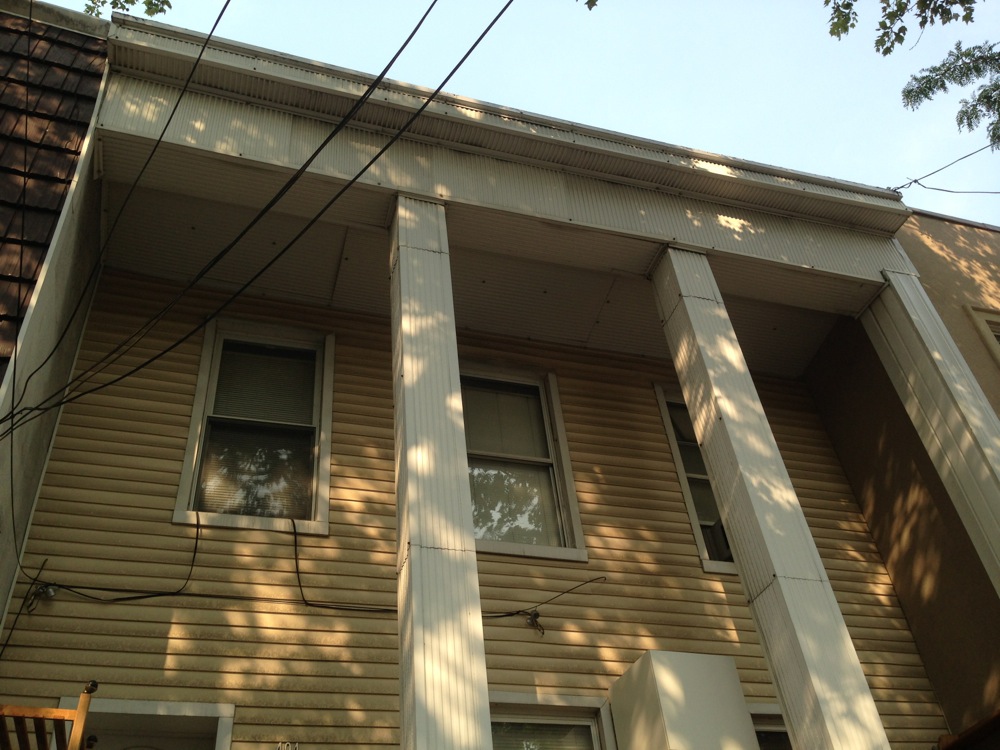
In one of the oldest parts of Brooklyn are the remnants of a now mostly forgotten colonnade row — not the famous one in Brooklyn Heights but another one in what is now Williamsburg.
In the 1830s, ’40s and ’50s, Greek Revival was the fashion, and all over the U.S. people were throwing up facsimiles of Greek temples, even if behind the impressive facades were perfectly ordinary, even humble rooms. An unknown builder here erected a row of houses on Humboldt Street — we can’t say exactly when or even how many — all with tall Doric columns running two stories, from rooftop to porch, over a low basement.
The houses were wood frame, covered in clapboard, and their large windows and doors were topped by impressive triangular neo-classical pediments.
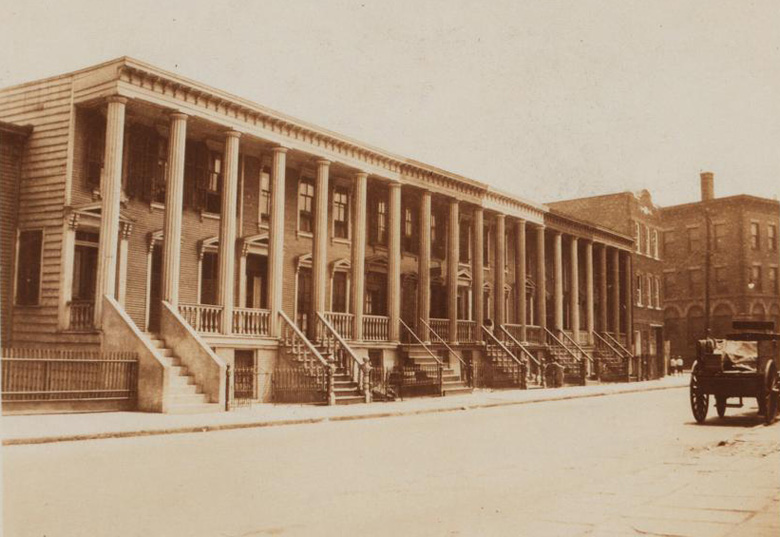
Photo New York Public Library via Wooden House Project
An 1898 map shows there were probably eight in the row, with, strangely, a ninth house around the corner on Richardson, standing by itself.
That one is still there, at 201 Richardson Street. As for the Humboldt Street row, only No. 494 still has its distinguishing columns, now covered in siding. If you whiz by in a car, perhaps as you’re coming off the nearby BQE ramp, you’ll probably miss it.
Until recently, there was a third. Next door to 494 Humboldt Street, No. 492 lost its columns to a renovation in 2012, old photos reveal.
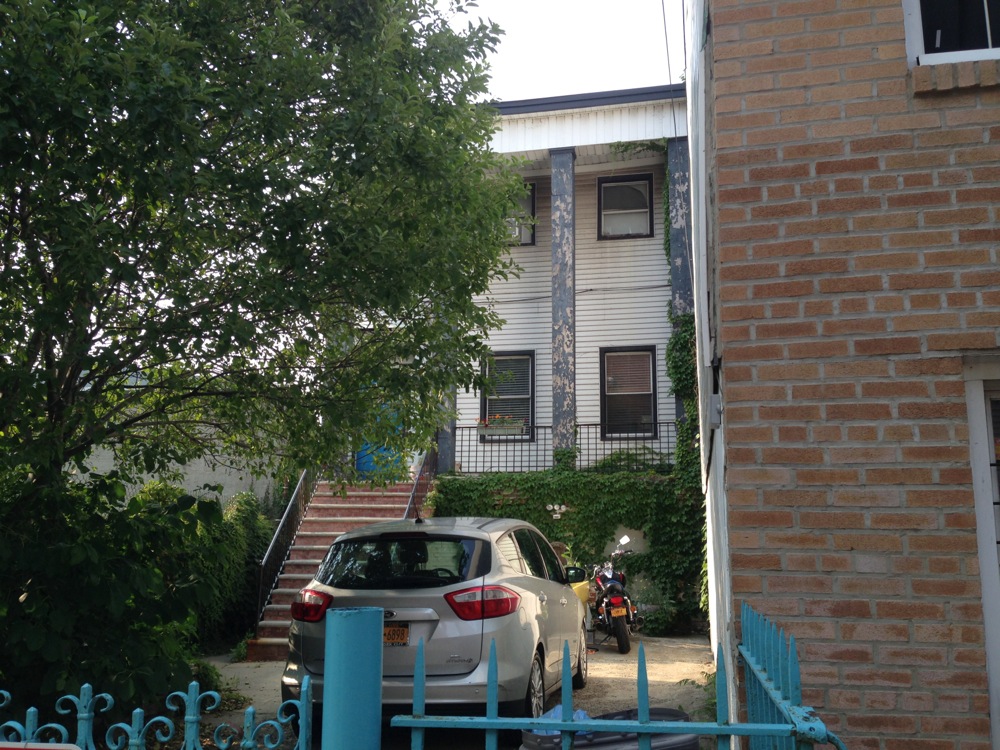
A member of the row that, strangely, stands alone around the corner, at 201 Richardson Street
Most of the rest of the row was altered early in the 20th century. A photo from 1922 in the Brooklyn Library archives shows a colonnade row of six houses with columns along Humboldt Street. By 1932, only three remained, another old photo reveals.
The AIA Guide to New York City describes 492 and 494 Humboldt Street and 201 Richardson Street as part of the same row. It puts the date at “circa 1850” — late for a colonnade row, but likely accurate, considering the triangular pediments, which match those on the 1847 State Street houses in Boerum Hill, and the verging-into-Italianate style of the brackets.
“These were severed parts of one of several formerly great Brooklyn colonnade rows,” says the fourth edition of the Guide, before going on to lambast the house owners for “destroying a bit of architectural heritage” with siding and “turgid stone wainscoting.” In fact, the siding, as long as it is not leaking, may be preserving the original wood details underneath, leaving open the possibility of restoration one day — unlike the other renovated houses on the street.
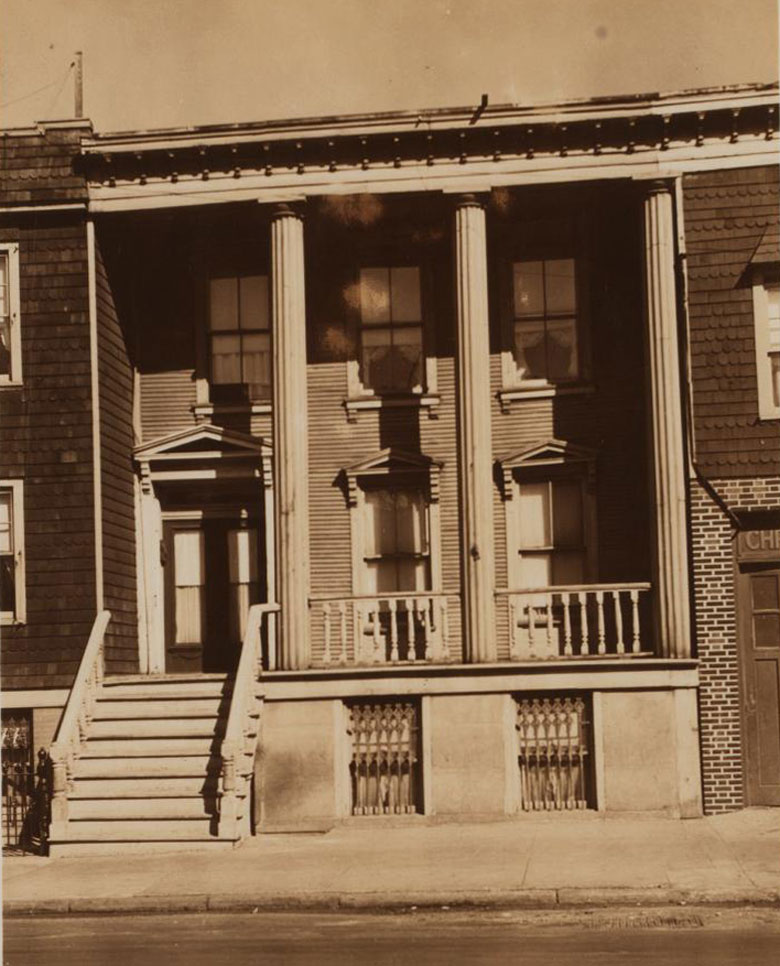
A closeup of a Humboldt Street house reveals clapboards and pediments. Photo New York Public Library via Wooden House Project
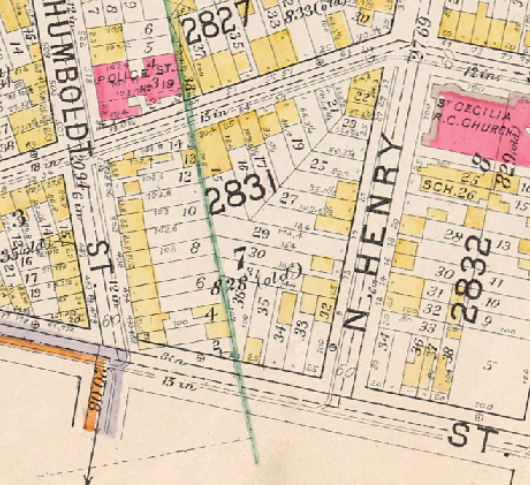
Brooklyn originally had four colonnade rows, the AIA Guide continues. Nothing remains of the “least known” of these, which was also in Williamsburg, on the east side of Kent Avenue between South 8th and South 9th Street, which at the time had lovely waterfront views.
Also completely obliterated is an 1838 row known as Underhill’s Colonnade. It stood on Columbia Heights between Middagh and Cranberry in Brooklyn Heights, commanding a sweeping view of the East River, until the whole row burned to the ground in 1853.
Brooklyn’s best known and best preserved colonnade row is a restored row of four houses at 43 to 49 Willow Place in Brooklyn Heights. The Guide puts the construction date of these at circa 1846.
For now, though, these stand as reminders of an era with noble ideals inspired by ancient Greece, architectural ghosts marking the past.
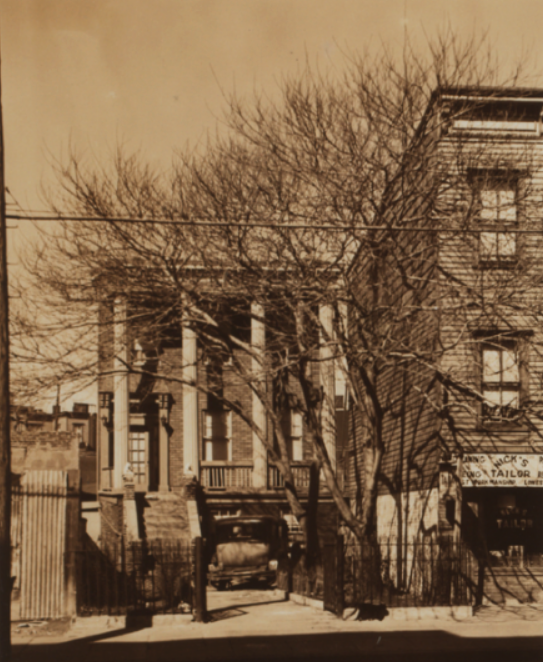
An old, undated photo showing the standalone columned house at 201 Richardson, via the New York Public Library. The double brackets under the altered pediment over the door match the ones in the 1922 photo of the row of six on Humboldt Street above
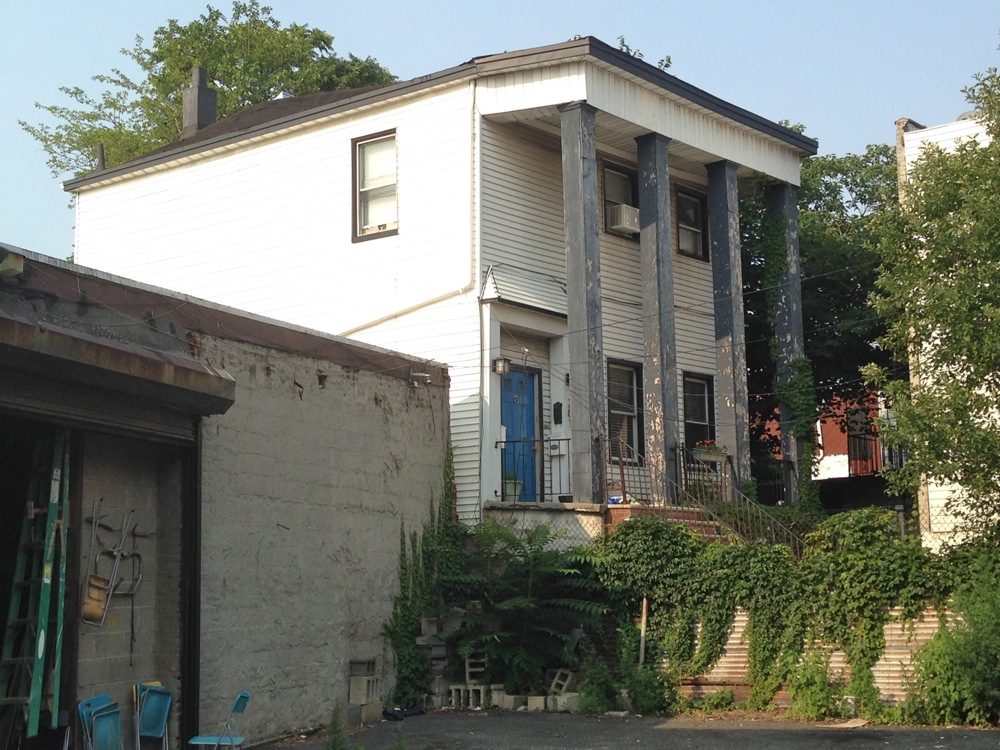
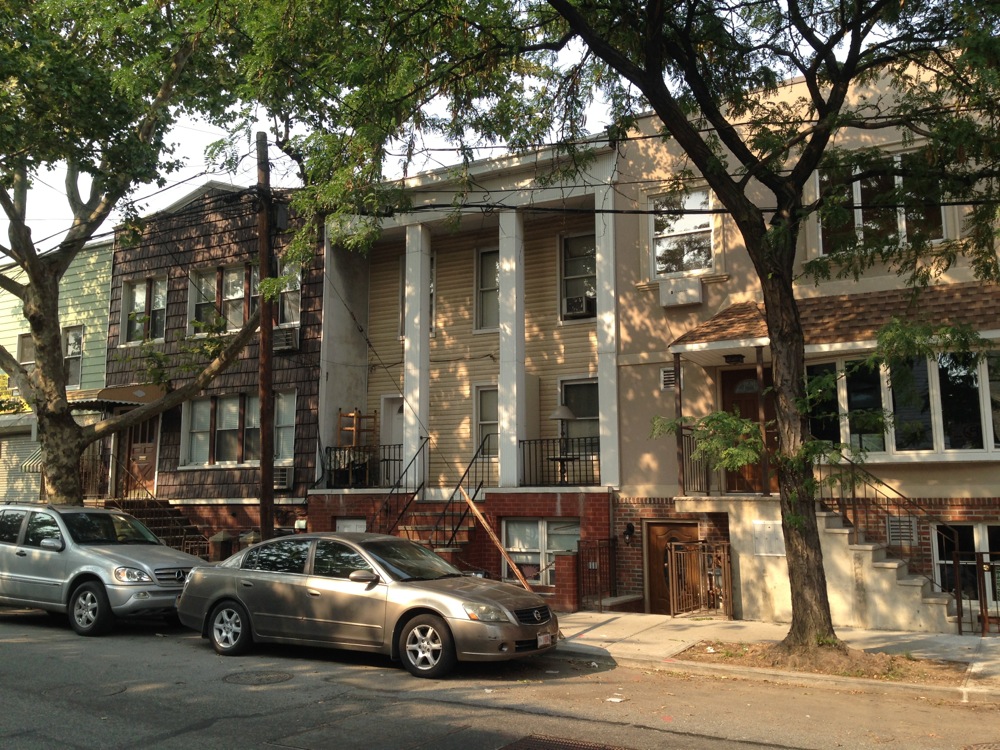
The remaining Humboldt Street columned house, at No. 494, above and below
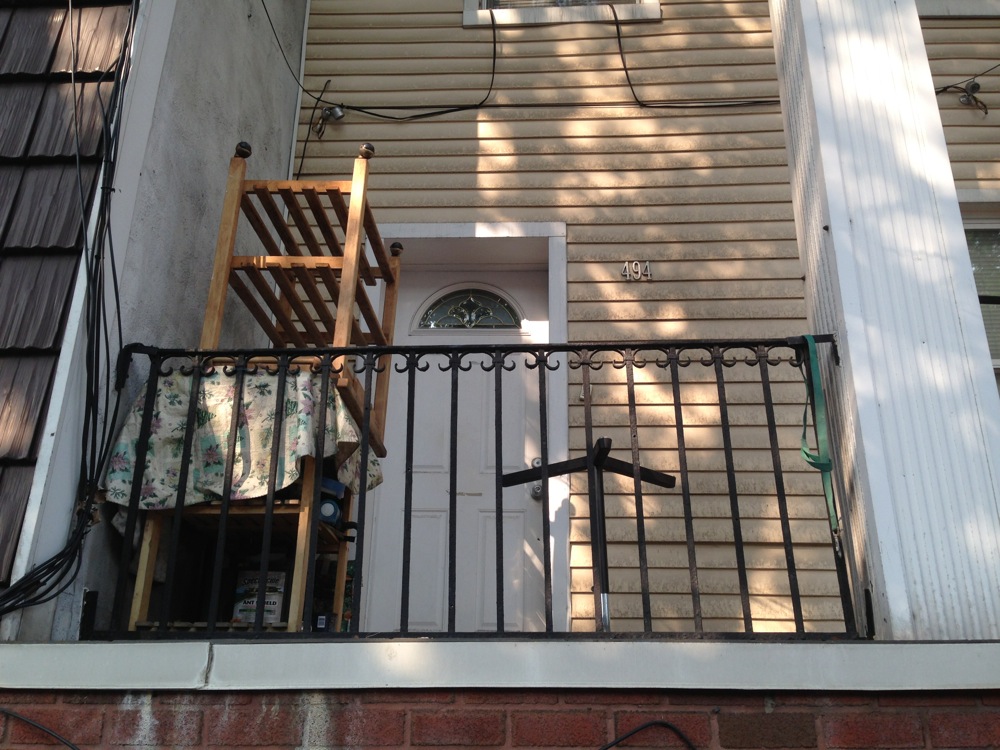
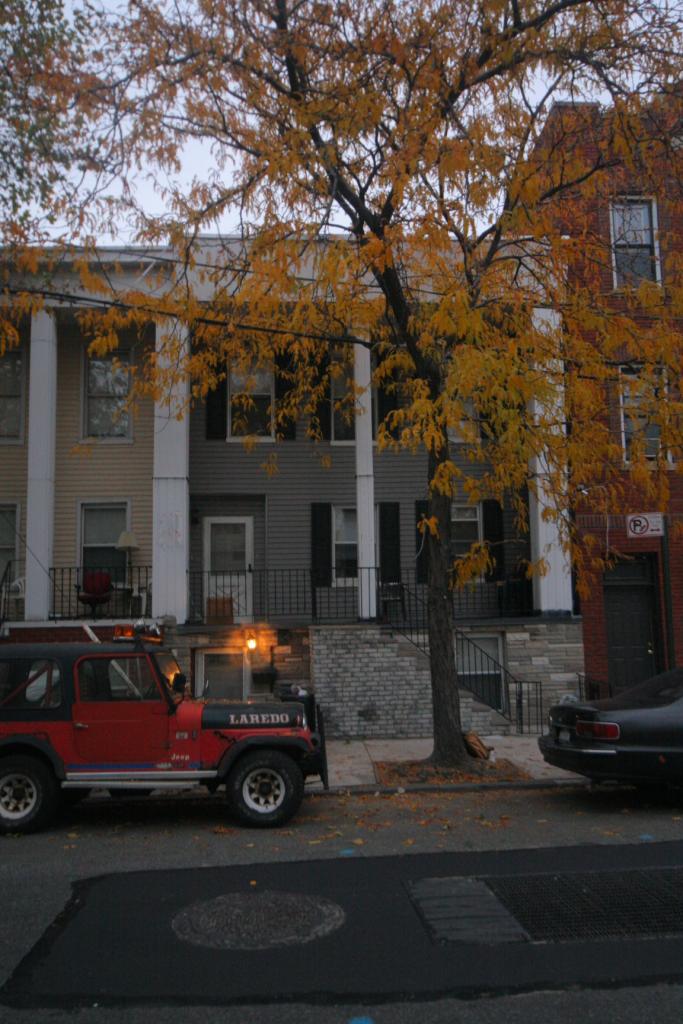
No. 492 Humboldt Street in 2006, when it still had its columns. Photo by Scott Bintner for PropertyShark
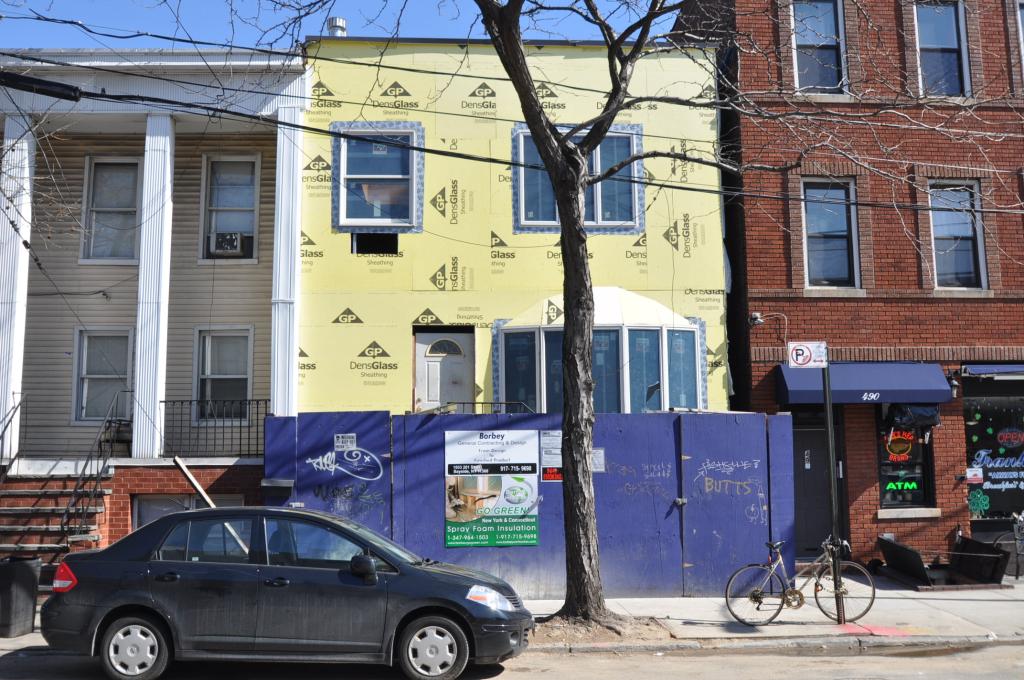
No. 494 Humboldt underwent a renovation in 2012 that removed its columns. Photo by Christopher Bride for PropertyShark
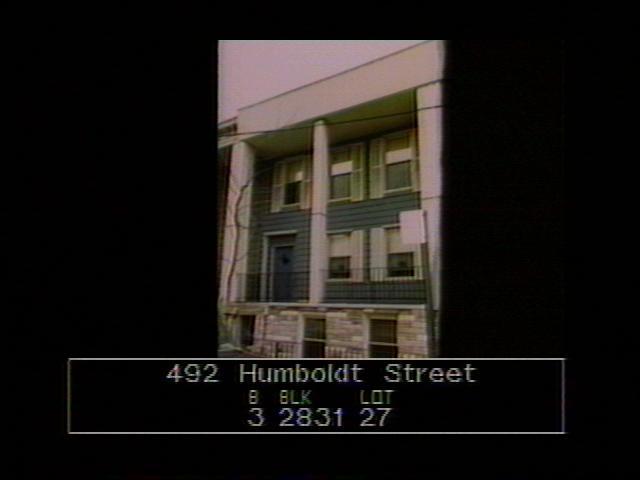
Tax photo of 492 Humboldt Street via PropertyShark
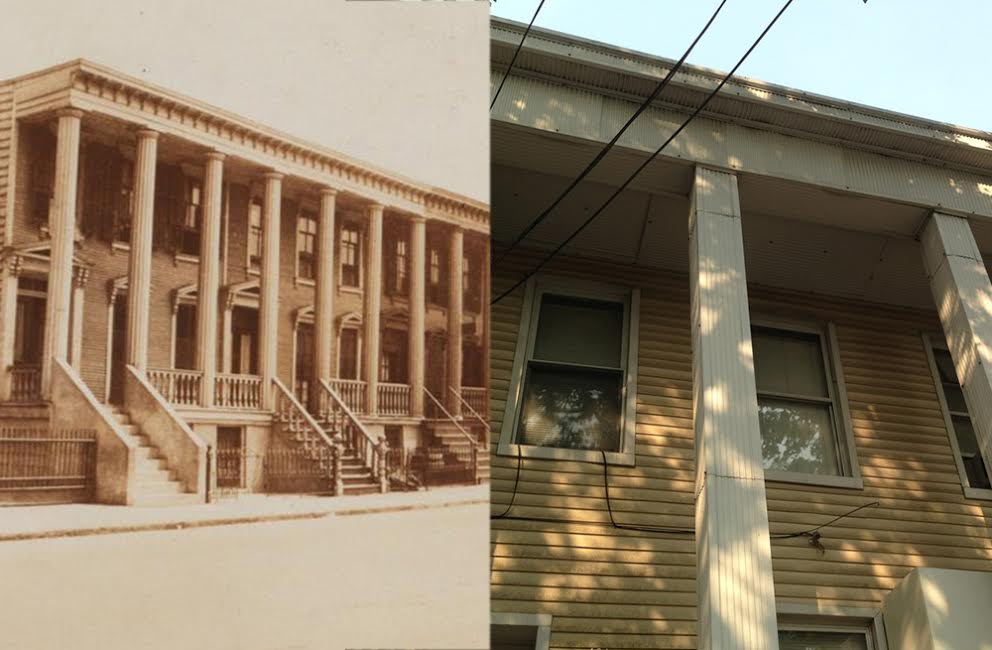
Then and now

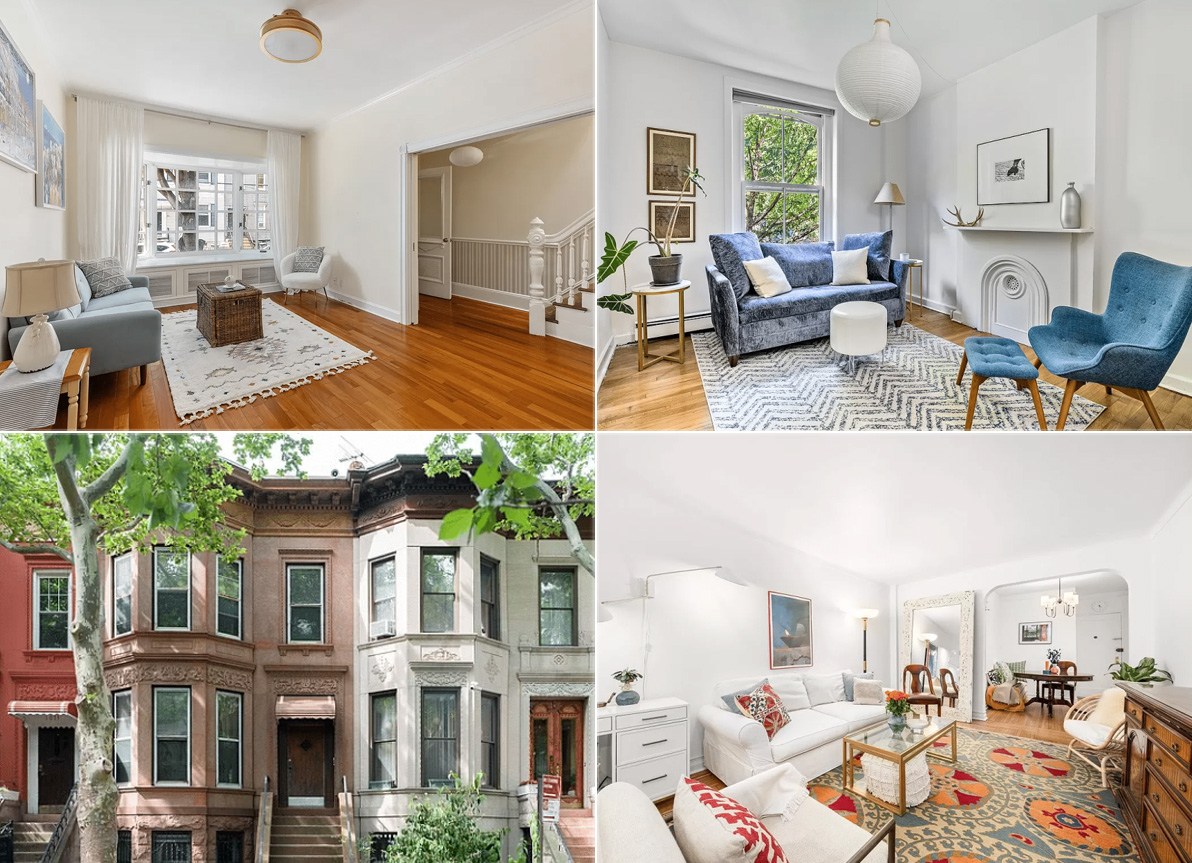
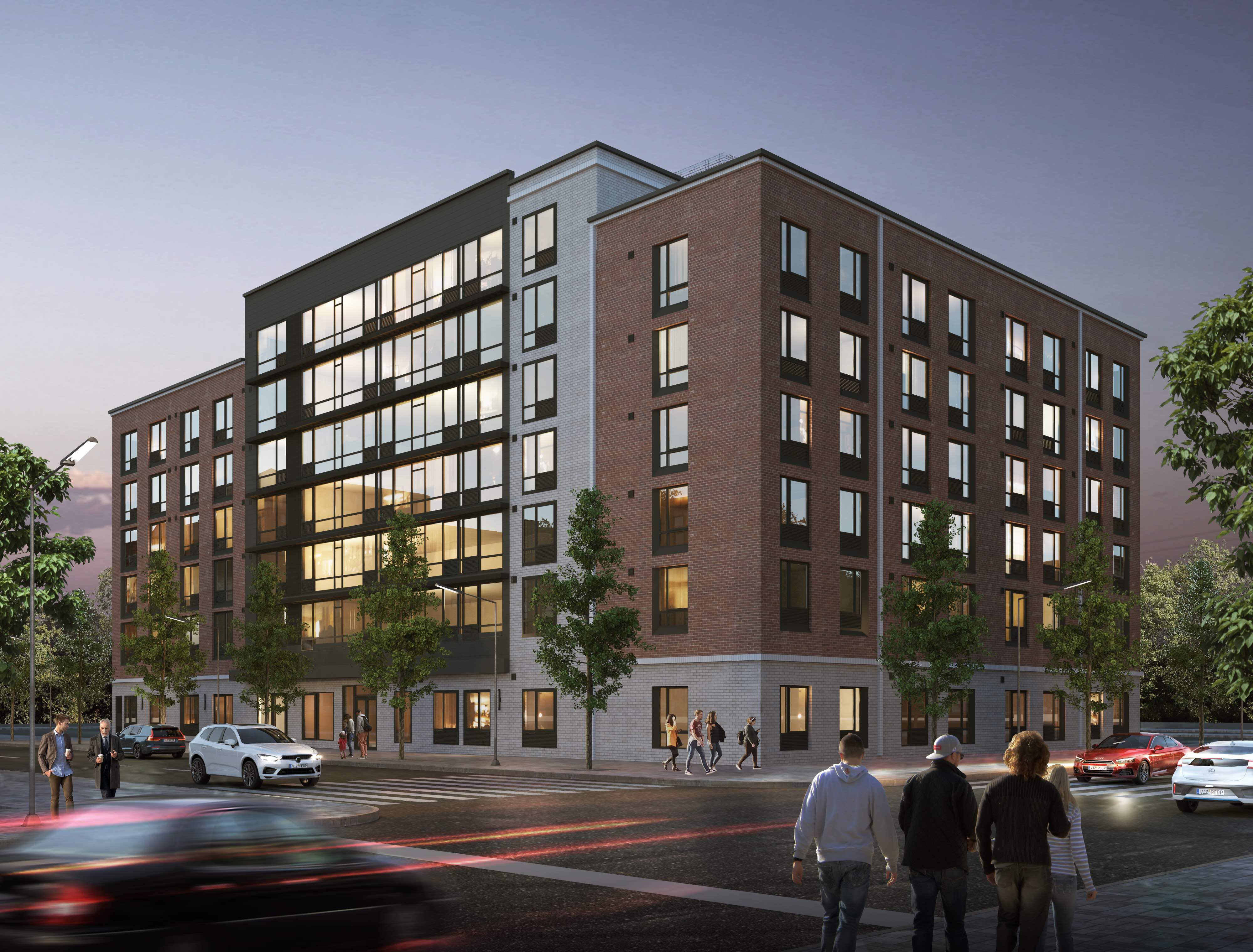
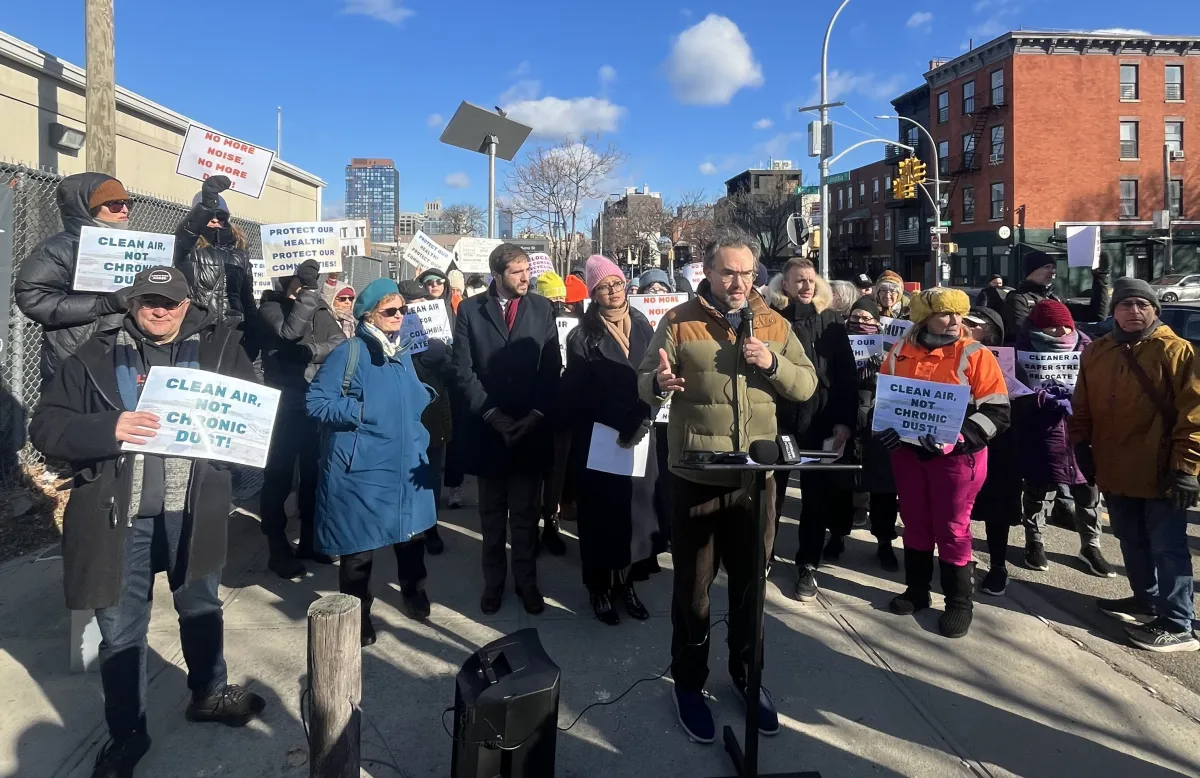
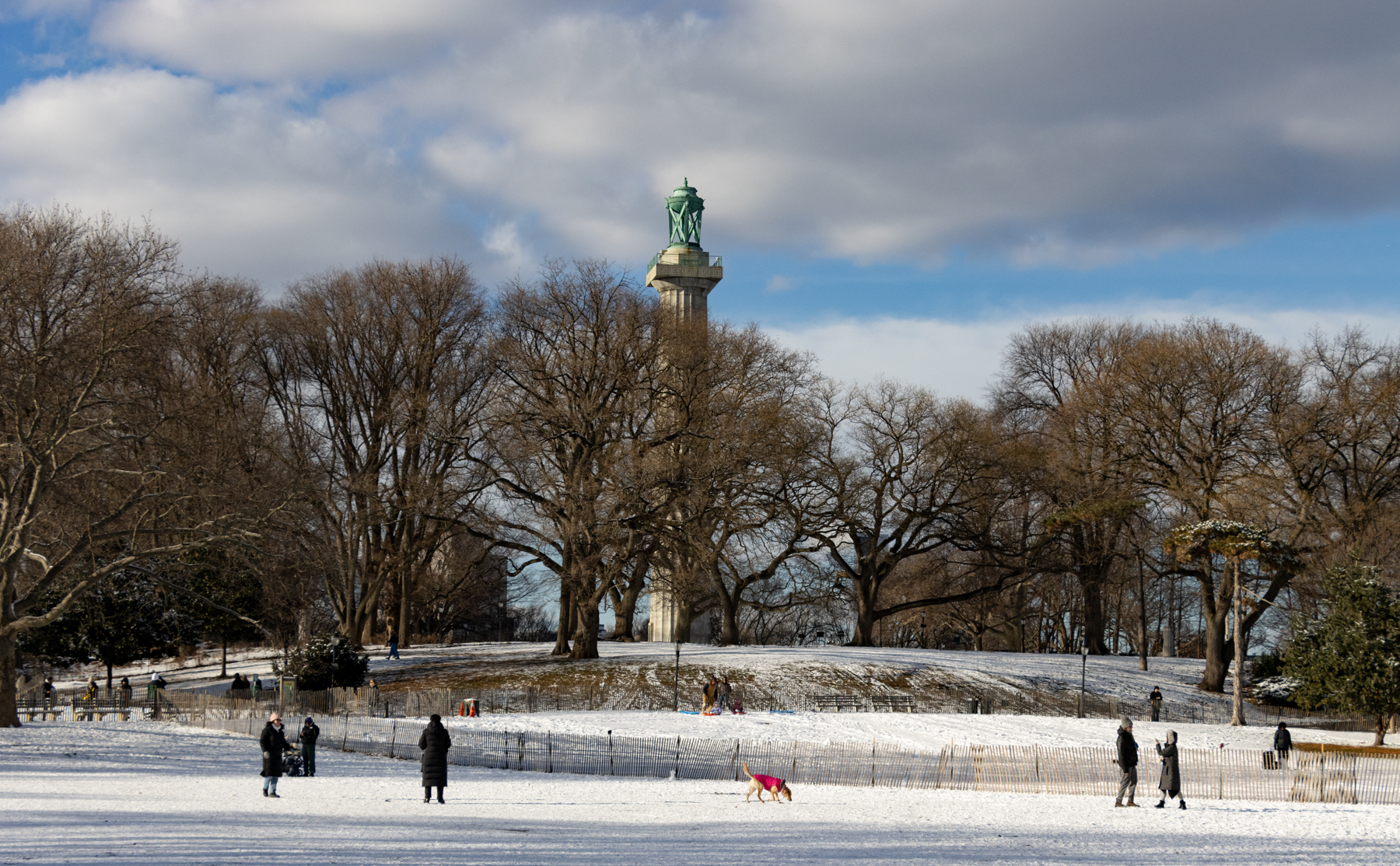




I believe that house was owned by the Formato family back in the 1930’s -40’s. They did home improvements and construction but I guess they chose to keep the columns. Must have had a lot of foresight.
I think the 1850’s date for the construction of the Humboldt St. row is probably correct. This block is situated very close to the border between Greenpoint and Williamsburg, which was originally marked by the course of the now long gone Bushwick Creek. It wasn’t until the 1850’s that the upper reaches of the Creek were filled in and land upon which the collonade row was constructed became available for development. By the way, you can trace the course of the old creek by seeing where the street grid changes in this immediate area.
Wow, I know those houses and I always assumed the columns were something put in by the Italian owners with they did the siding. That is really cool.
And yes, there’s a treasure of cool details under a lot of those siding-clad houses, and even a strange beauty in the faded colors of the old siding. It’s amazing how old some of those houses really are.
Interesting that sites like newyorkyimby keep harping on the idea that there is no architectural value in vinyl-sided houses.
“East Williamsburg, with extreme demand and no redeeming architectural value, remains stunted at two and three stories. ”
http://newyorkyimby.com/2015/03/community-control-is-destroying-americas-cities.html